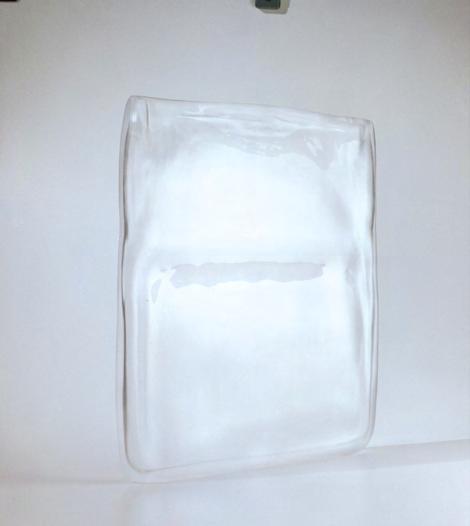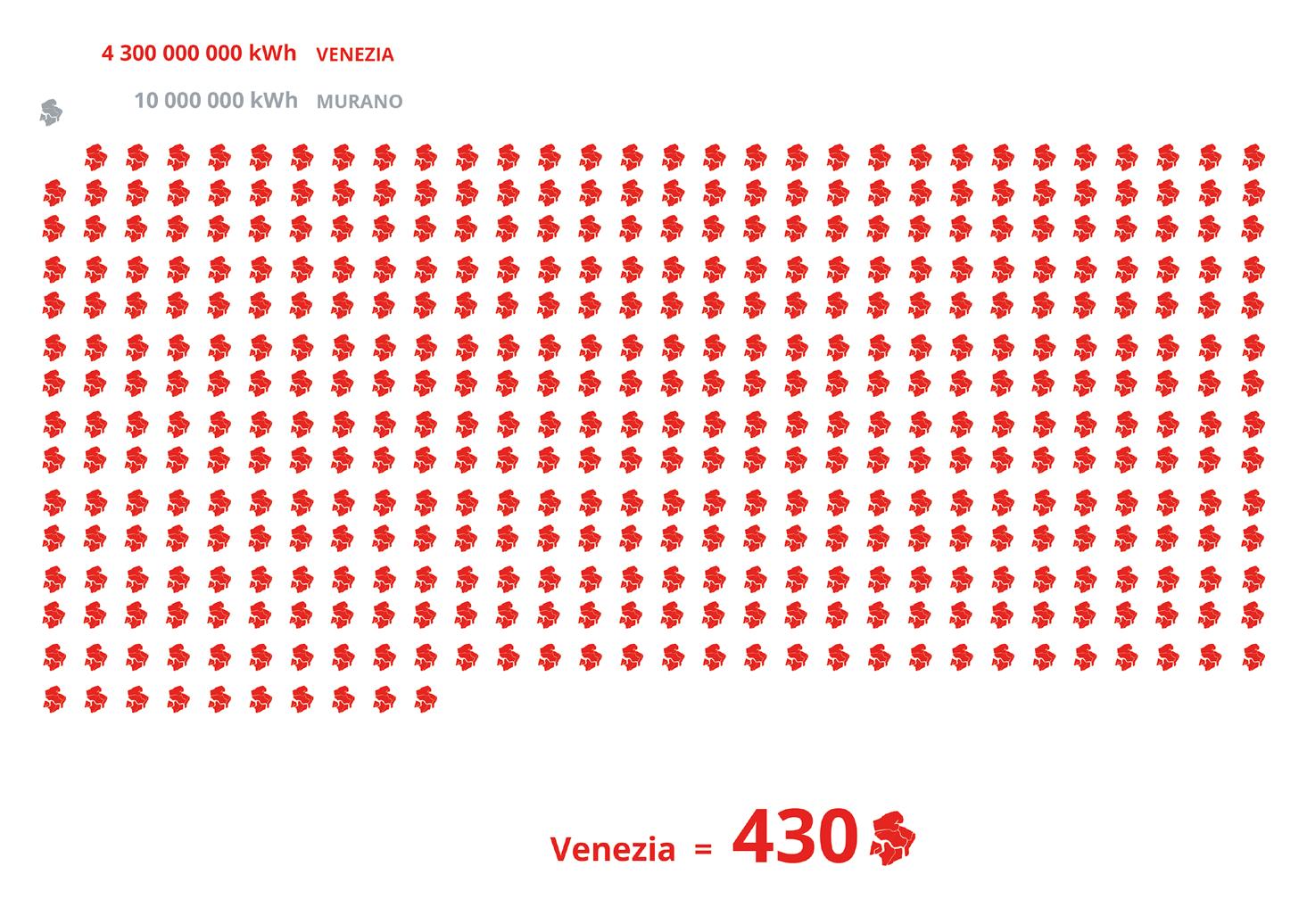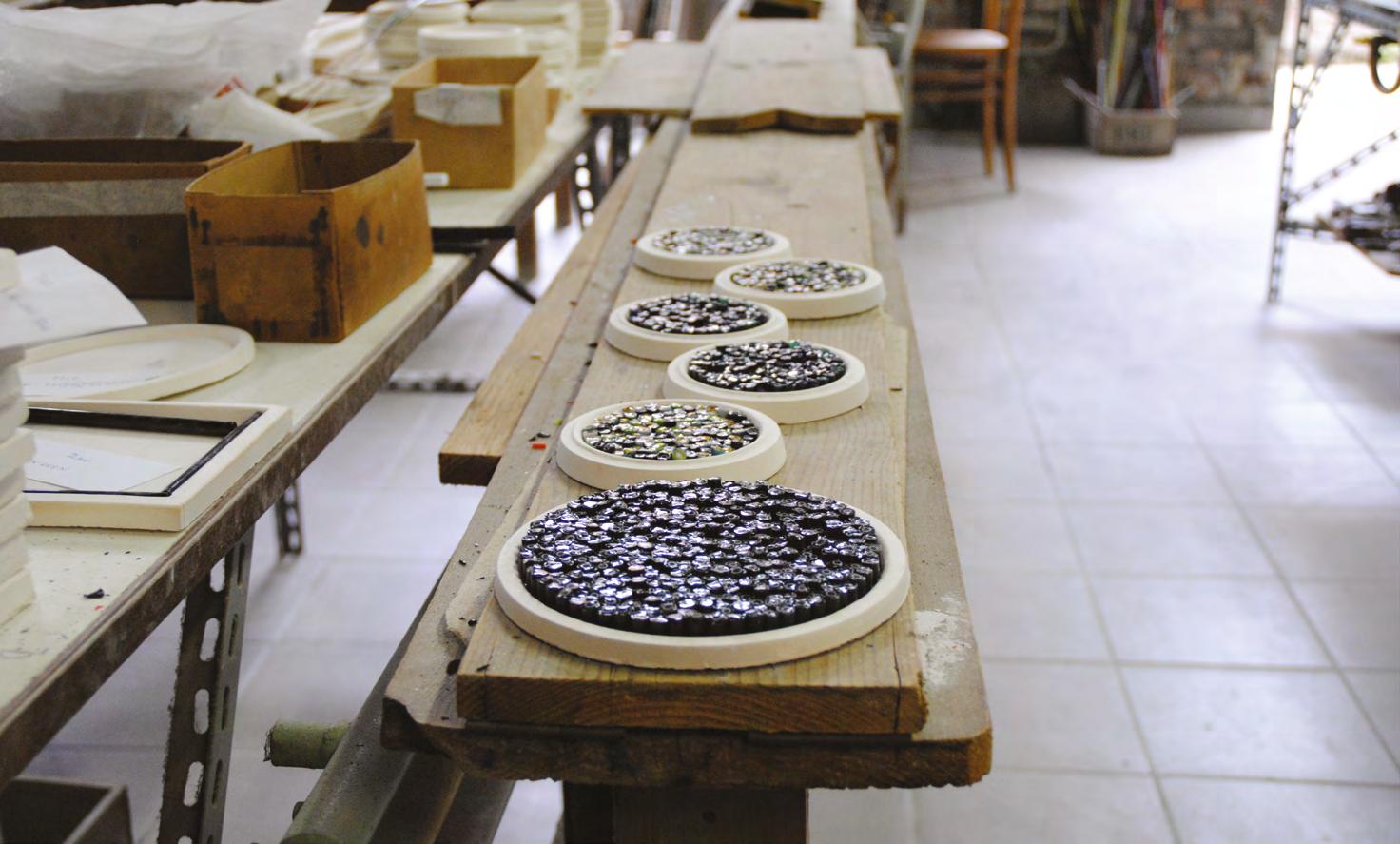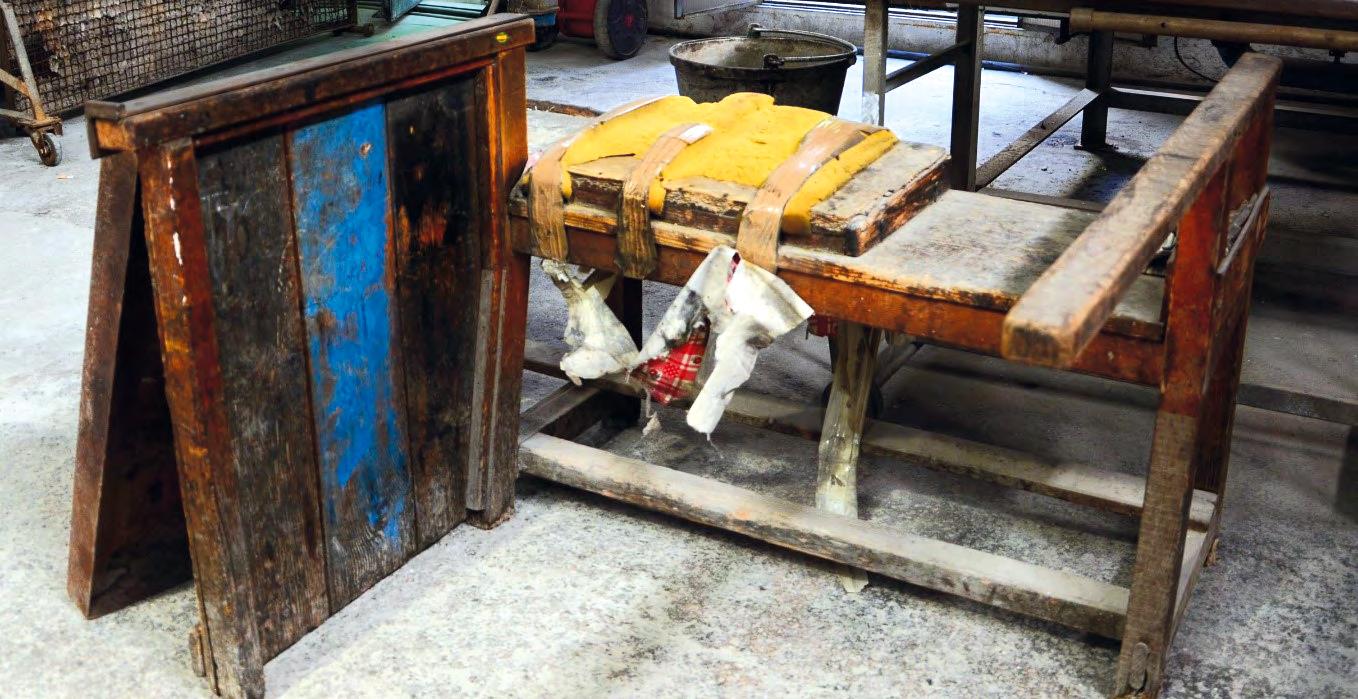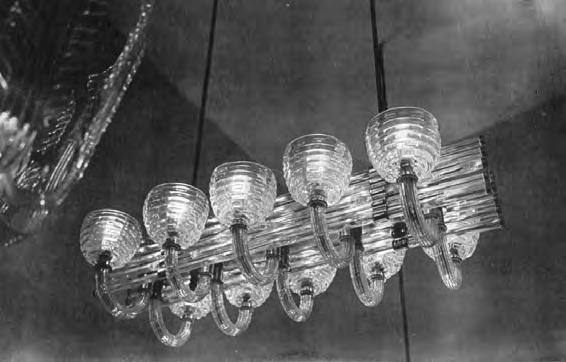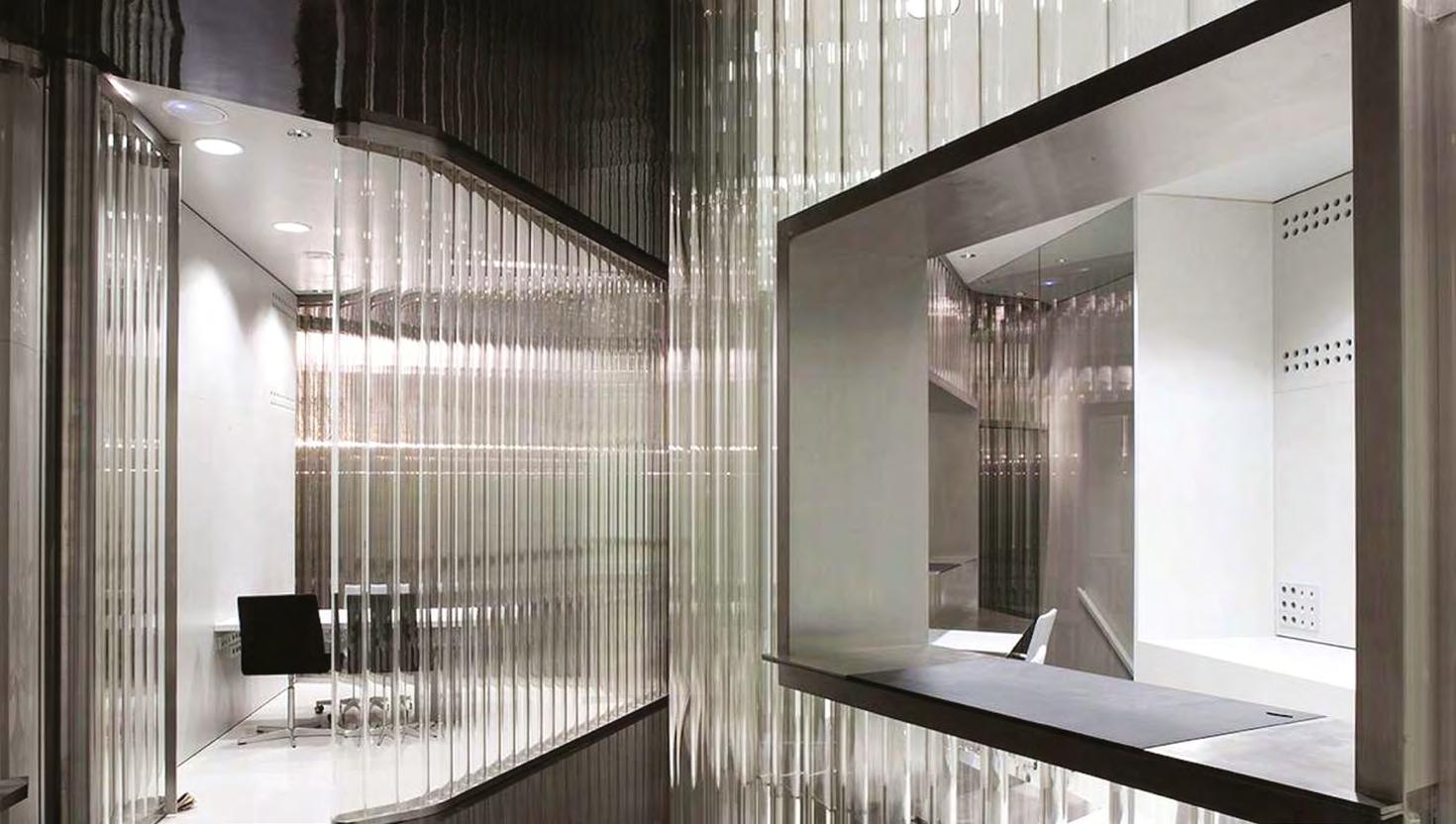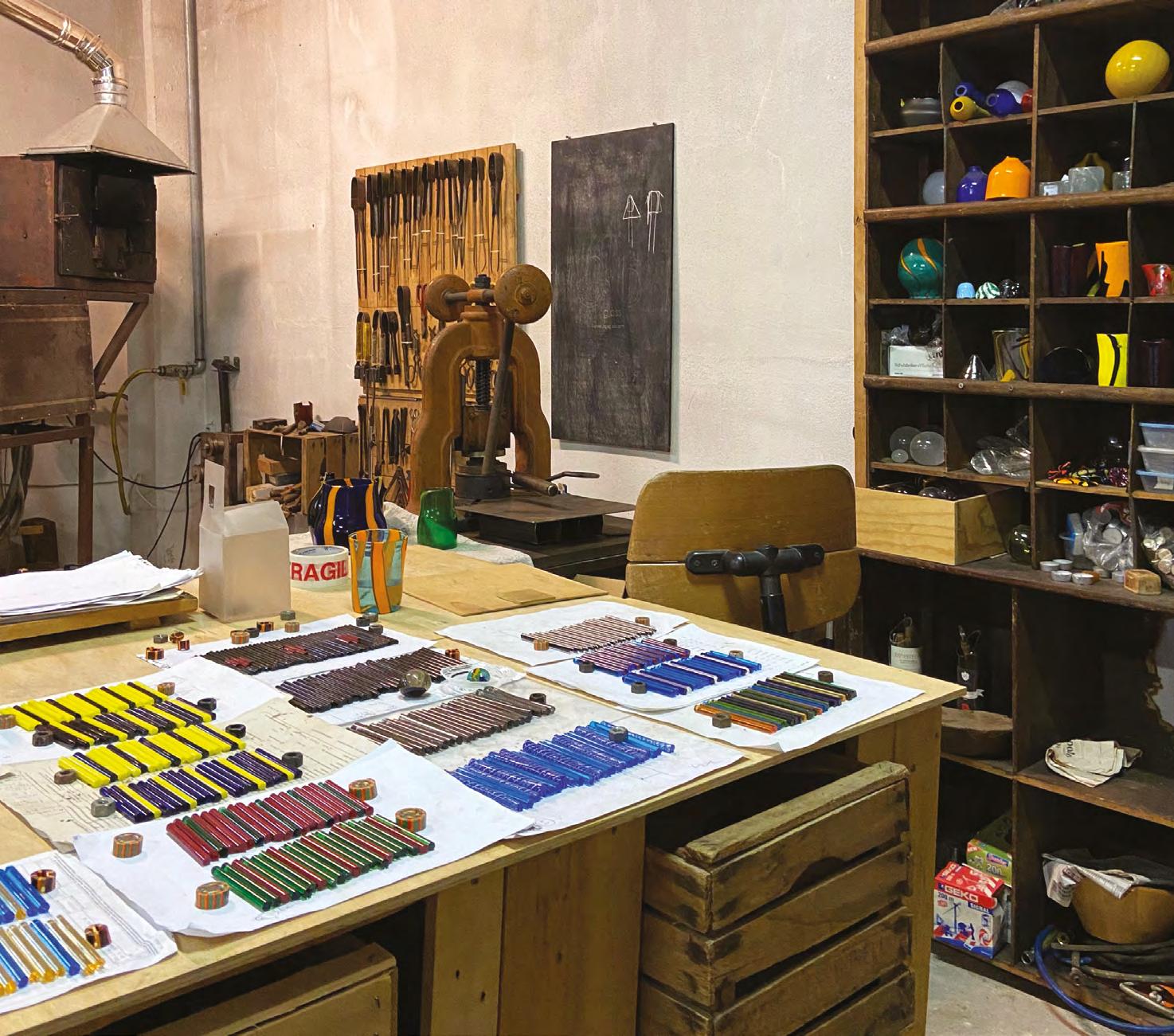
16 minute read
The “beautiful scraps” a precious resource
ERIKA COCCATOA, LAURA BADALUCCOA
This work focuses on the study and potential of artistic glass production waste, called cocciame, which highlights the importance of the role of the designer as a promoter of innovation at the system level. This research, developed in the years 2018/2019 and discussed as a master’s degree thesis of the writer Coccato, investigates how the concept of industrial symbiosis can be applied to the recovery and enhancement of artistic glass production waste, thinking about the creation of a synergistic network within the Veneto’s region, with the use of a model that can be replicated and modulated in other areas. It also emphasizes the importance of guided experimentation with the material and the sharing of resources and results in an online space with a view to continuous improvement. For the innovative and systemic approach to the recovery of cocciame that can potentially generate new job opportunities in the Venetian territory, the degree thesis was awarded the first prize in November 2019 at the third edition of the Laudato Si competition.
A Università Iuav di Venezia, Venice.
KEYWORDS: DESIGN, SYMBIOSIS, UPCYCLING
Introduction
The discussions concerning the limit of resources and the importance of their safeguard have been present in the European agendas for several years and have been highlighted also in the CEAP 2.0 (European Commission, 2020). It’s therefore of fundamental importance to think about these issues from a circular perspective. Paying attention not only to the consumption of the upstream resources but also to the product’s end of life and their material’s recovery. In conjunction with this situation, the knowledge by institutions and professionals on the potential of the circular economy is essential. The circular economy “defines a regenerative and reconstitutive industrial system, in terms of both ends and means. We take the concept of the end of life of the product and replace it with that of eternal ‘resurrection and transformation’ [...] enhancing each component in a closed, efficient cycle” (Bompan and Brambilla, 2021, p. 72). Briefly, the circular economy consists in using raw materials from renewable or renewed sources, in which the design and the production are structured according to specific quality standards and to move towards a performance economy. The design of those products respects and cooperates with the environment; these paths are also designed to give a purpose for the end of life of the product in question. Within the circular economy, it is possible to identify different action strategies that intervene at different times in the product life cycle; to address the same time: the scarcity of resources and curb the increase in waste and scraps, it is possible to turn attention to industrial symbiosis. The symbiosis arises from the need to create a connection between companies, to generate a virtuous system for the recovery of waste, capable of creating economic and environmental benefits for those involved. According to the definition established by ENEA “By industrial symbiosis we mean the exchange of resources between two or more dissimilar industries, meaning by ‘resources’ not only materials (by-products or waste) but also energy waste, services, expertise” (Cutaia and Morabito, 2012, p. 44). The structured system, therefore, allows two or more entities to give each other a mutual advantage thanks to a close collaboration regarding some aspects related to production. This type of reasoning, apparently far from the sphere of glass, is in fact very appropriate. Although glass is a virtually eternal material (Gisotti, 2017), this can only be considered true for some of its types. The characteristics of the glass change according to the chemical composition and are a potential vehicle for end-of-life problems. If for industrial glass, called short glass, we do not encounter particular problems in recovering or reusing the material, the same cannot be said of artistic glass. This type of glass, called long glass or soft glass due to its ability to be processed out of the oven for a longer time than industrial glass, presents numerous difficulties for its recovery at the end of its life. Due to a higher percentage of sodium carbonate in the
mixture, it is impossible to combine this glass with industrial glass, as this would generate structural problems in the printed object. Another important aspect is the range of colours present in artistic glass. This variety of choices makes it possible to create beautiful and visually complex objects, however, the oxides used are often incompatible with each other and they generate breaks and cracks when fused. The production waste of artistic glass, called cocciame, is usually destined for a strong downcycling1 process which leads them to be finely shredded to be used as a material in the road substrate, a waste and a significant loss of value for what turns out to be a precious waste thanks to its aesthetic properties. From these premises arises the need to explore the possibility of applying the concept of industrial symbiosis to the recovery and enhancement of artistic glass waste, generating a path that brings value creating an upcycle path and pushes an alternative reflection for the end of life of this material.
A symbiosis for the artistic glass
The first step to implement an upcycle system for artistic glass, where for the upcycle, we intend “an industrial process that uses waste for products of higher value [...]” (Bompan and Brambilla, 2021, p. 178), but following the example of the industrial symbiosis, was to determine what were the basis for creating a valid path for its recovery. Applying the concept of upcycling to this strategy means following the perspective where this practice isn’t conceived as a simple system of recycling and recovery materials, but above all, as a process within a specific design thought, in which the recovery of large quantities of waste material and the product’s end-oflife are implemented and at the end of their journey, will be reprocessed. This way of acting will make the potential waste material go up the value chain, obtaining not only first-second materials but above all some highperformance products. Studying the proposals made so far, about creating a valid path for the recovery of the artistic glass waste, emerged a discussion regarding the creation of a cocciame collection and sorting centred on the island of Murano, which was then set aside due to the unfavourable result of the cost-benefit analysis and also in light of the fact that in recent years most of the Murano glass industry, due to the high management costs, has decided to move its production to the mainland (City council of Venice IX Commission, July 2016).
From these premises, the consideration of the creation of a single collection center was born, analysis and sorting in an area that can be reached both by land and by water. Two points that meet these requirements have therefore
1 Downcycle: to use waste material or old or used objects to make a product of lower value than the original material or object. Cambridge Dictionary.
been hypothetically taken into consideration in the venetian area. The first is in the area of Punta San Giuliano, the second in the industrial area of the city of Marghera. These two areas would allow not only the approach by land and water but would also be free from the architectural and landscape constraints that limit new constructions on the island (A.Tosi, 2004; Venice Today, 2016).
To facilitate and optimize the recovery of artistic glass waste, the most important aspect is the subdivision of the cocciame to ensure its reintegration into other production cycles. In this regard, we wanted to outline a mechanized subdivision by main geometries and colours, then further refined through a manual step. The selection is to be considered possible only after having guaranteed the safety of the waste. To certify that the cocciame can be used for other productions, as a recovery material or that it doesn’t represent a danger to the environment, a composition test called the elution test or eluate test must be carried out at the chemistry level of the material by a verified issuing body, according to the UNI EN ISO 17294-2:20162. This test will allow it to be catalogued under the EER code (European Waste List) 10.11.12, or as non-hazardous waste (Council Directive 91/689/EEC).
Types of cocciame and the recovery chain
After carrying out a period of on-site observation at the Ballarin glass factory in Murano, it was possible to determine a certain hierarchy of shapes within the cocciame, due to the processing techniques typical of artistic glass, which also deeply characterize the waste produced. Producing objects of different natures, different types of wastes are created; those can be differentiated according to the type of processing to, which the material is subjected.
One of the main techniques for the realization of Murano’s artistic glass is blowing. Thanks to these techniques, one scrap piece commonly found, is the waste resulting from the detachment of the processing residue from the blowing tube, which once reached the breaking temperature, generates a high-pitched sound like a rattle, produced by its rapid contact cooling with the air. This type of element is often of a semi-cylindrical shape, chipped and not complete (called collar). Another type of waste originated from the necessity of passing a vessel from one blowing tube to the other, has a drop shape and often undergoes breakage. An additional scrap, represented by a long wavy strip of material, is produced during the final stage of a vases processing is given by the edge cutting, where the glass excess is cut off. In addition to these wastes made during processing, it’s possible to find scraps deriving from processing errors and broken pieces. Finally, we can find several incomplete glass rods, discarded because they are deemed
2 UNI EN ISO 17294-2:2016: Water quality – Application of inductively coupled plasma mass spectrometry (ICP-MS) – Part 2: Determination of selected elements including uranium isotopes.
unsuitable for processing, also to avoid basic defects in the material, it’s a habit to cut the beginning and the end of the glass rods. From these premises then the choice of applying a selection of the waste to be used for recovery is based on its geometry. Five categories were identified, and each was assigned a name (Figure 01): • The glass rods. Waste parts of the glass rods • Offset of the edge crop. Pieces derived precisely from the cutting of the edge of cups and vases or • finished pieces destroyed • Collars. Material made by detaching the glass from the blowpipe with a typically hollow cylindrical shape • Full glass. Derived from cuts of the excess material in a product or the joining of several parts • Irregular forms. In which all the other components that cannot otherwise be catalogued are gathered.
Selecting the elements and diversifying them by colour and geometric conformation allows not only to give a better-intended use to the waste but also to make their reintroduction into different production cycles practical. In the route diagram (Figure 02) it’s possible to note the various hypotheses of the use of the recovered material. In the first case, an attempt is made to reintegrate the newly recovered material as a secondary raw material,
Fig. 01 The categories of cocciame selected and their iconographic representation. E. Coccato
which after being reduced to grit, could be reintroduced into the production cycle, partially replacing the virgin raw material, reducing the amount of raw material and costs. The second path follows the current downcycling scheme. Undersized parts, small-caliber grits, splinters and sands would still be destined for this path already outlined. The last hypothesis of recovery and reintegration represents a complex, but significant path from the point of view of investigating the future of these waste. In the sorting center described above, once the sorting has been carried out, the material directed to the upcycling supply chains would continue towards its new intended use as a secondary raw material to be reintroduced into production.
The purpose of this system, as already reported, is to exploit the aesthetic potential of waste but also to hypothesize different ways to reuse and recover the maximum possible amount of product from an upcycling perspective. When the cocciame has been divided, the output obtained is represented by materials with a defined geometric shape and materials with mixed shapes. A subdivision following the rules previously explained would allow the destination to different uses of the material in question or to reflect on the experimentation with cocciame in a more defined way. At this point, it’s of fundamental importance to be able to guarantee the scientificity of the experimental process. In this sense is essential to provide the experimenter, be it a designer, a professional or otherwise, with adequate tools.

Fig. 02 The symbiosis system. The schematic representation of the system of synergies that would be created rethinking the process as a circular recovery path, with the transport system scheme and after the sorting process of the artistic glass’s waste. E. Coccato
The experimental factor
Design as a catalyst for innovation wants to act as a means to stimulate the creation of new transversal solutions that put designers, producers and researchers in communication. In order to allow the various professionals to communicate using a common language and therefore favor the development of shareable and scientifically valid research on the use of cocciame, post-selection, three targeted tools have been formulated, each with its own peculiarities to be used in the realization of the samples. test with hot working. This approach aims to highlight the potential of the material and to clarify the best techniques and combinations to be used for introduction into serial and industrial production. Below are the three tools that present a physical part and a virtual part accessible from an opensource online platform connected to the project.
The sample book
The first requirement was to structure a catalogue of the samples to understand the use of the cocciame and to give the opportunity to accurately record the results obtained during the experimentation sessions; a system useful for codified and repeatable dissemination of knowledge, for anyone who wants to enter the research context. The card contains all the information useful for understanding the nature of the specimen made, the tools used, the material and quantity, the colours selected, the time and place, the oven temperature, and the time (Figure 03 and 04).


Fig. 03 Samples. Front: name encoding; technical info; information about the experimentation place. E. Coccato Fig. 04 Samples. Back: specific information about the sample; more accurate indications to replicate the sample. E. Coccato

Fig. 05 Comparative table. The table indicates with white (higher than 50%), grey (50%) and black (lower than 50%) the 1-1 compatibility between colours of different ranges and it is possible to identify it by moving the cursors specially created to highlight the point concerned by the search. While at the top, above the colours description, the green, yellow and reds signs represent the co-compatibility with the other colours of the same range. E. Coccato
Comparative table
The second working tool was developed to study the combination and compatibility between colours at a chemical level, with particular attention to the response in the melting and cooling phases because, as previously reported, this is a critical point in the recovery of this precious waste. The table present a 1-1 comparison between colours from the transparent range and colours from the pastel range, which can be expanded in the future with the addition of colour scales: alabaster, opalescent, and special; it has been structured in such a way that there is a clear and legible univocal relationship between colours of two different categories and that at the same time allows reading the compatibility between colours of the same range. In the online version, the compatibility information provided can also be enriched with observations by the researcher that emerge as curtains on the selected boxes. This tool is of fundamental importance to provide information on colour compatibility and to allow the researcher or designer to make an informed choice regarding the creation of colour mixes both of the same range and between different ranges (Figure 05).
Textures
The third and last tool consists of a small selection of simple, editable and modular textures thanks to a frame similar to that of movable type printing, which can be created in 3D printing by downloading and modifying the models from the prepared platform. Applicable to the production of textured glass molds.
With the use of these tools and the collaboration of the glass master Giuliano Ballarin and the glass professor of I.I.S. M. Guggenheim Jacopo Gioli, it was possible to create a physical sample to verify on a practical level the use of the aforementioned strategies and tools (Figure 06).
Conclusions
The working method discussed in this paper has been set up to operate extensively and for a long time, even in geographically distant areas, as it allows for research and experimentation while maintaining a constant methodology and tools, as well as allowing the continuous expansion and updating of information. Although today the creation of a physical place intended for the recovery, sorting and experimentation with the waste of art glass is not realistic, nothing prevents this hypothesis from becoming a reality in the future, given the potential of the subject investigated. The

Fig. 06 All the samples together. These are all the results obtained by the experimentation with artistic glass waste, the beautiful scraps, combining together different types of cocciami, colours shapes and textures. E. Coccato
research presented is intended as a starting point to start a reflection on the study of the unexpressed potential of this precious waste, stimulating the application of the strategies of the circular economy and design to the study of possible innovative solutions that think about the recovery and enhancement of system-wide material. The hope of the research developed is to create a valid path for guided experimentation with the material, which allows for to structure of recovery strategies even on a large scale, as well as allowing the collection of reasoned and shareable data. As already reported, this research work has also given rise to a thesis, which, precisely because of its potential to generate value in and for the territory, was awarded the first prize at the Laudato Si 2019 competition entitled “Work is a common good”. An acknowledgement by the institutions makes us understand how important it can be to imagine different scenarios for the future of this beautiful waste, putting different actors in synergy and acting from a systemic point of view in the recovery and enhancement of this material.
References
Bompan, E., Brambilla, I. N., (2021). Che cos’è l’economia circolare. Milano: Edizioni Ambiente. Consiglio Comunale Venezia IX Commissione. (2016). Verbale della seduta del 18-07-2016 ore 14:30, Città di Venezia, pp. 3 (online). In http://consigliocomunale.comune.venezia.it/?pag=atti_verb_268 (last accessed May 2022). Council Directive. (1991). On hazardous waste (91/689/EEC) (OJ L 377, 31.12.1991, p. 20) (online). In https://eur-lex.europa.eu/ legal-content/EN/TXT/PDF/?uri=CELEX:01991L0689-20081212&from=IT (last accessed May 2022). Cutaia, L., Morabito, R., (2012). Ruolo della Simbiosi industriale per la green economy. Uno strumento innovativo per la chiusura dei cicli delle risorse. Energia, Ambiente e Innovazione. Speciale Verso la green economy: strategie, approcci e opportunità tecnologiche, n. 1. Viterbo: ENEA, pp. 44-49. Gisotti, M. (2017). Vetro. In Pellizzari, A., Genovesi E. (ed.), Neomateriali nell’economia circolare. Milano: Edizioni Ambiente, pp. 160-163. European Commission, Directorate-General for Environment. (2020). A new Circular Economy Action Plan. For a cleaner and more competitive Europe. COM(2020) 98 final (online). In https://www.eea.europa.eu/policy-documents/com-2020-98final-a (last accessed August 2022). Standard UNI EN ISO 17294-2:2016. (2016). Water quality – Application of inductively coupled plasma mass spectrometry (ICPMS) – Part 2: Determination of selected elements including uranium isotopes. Tosi, A. (2004). Murano e il distretto del vetro: aspetti socio-economici. Quaderni. Documenti sulla manutenzione urbana di Venezia, n. 19. Venezia: Insula, pp. 13-19. Venezia Today. (2016). Un impianto per il recupero del vetro: l’idea per far uscire Murano dalla crisi (online). In https://www. veneziatoday.it/cronaca/vetro-murano-confindustria-ministero.html (last accessed May 2022).

